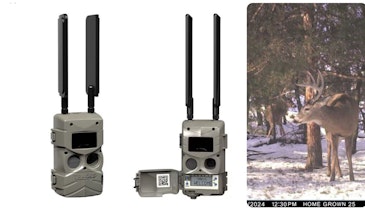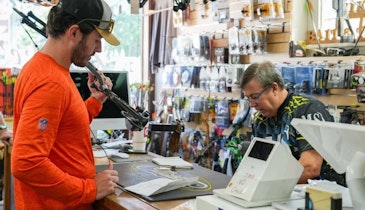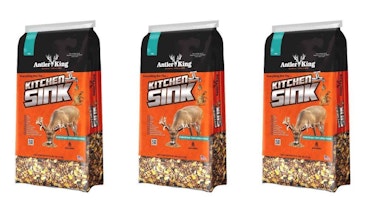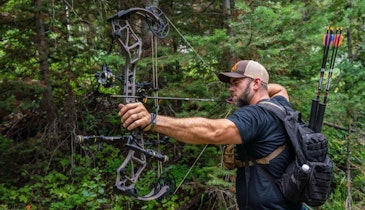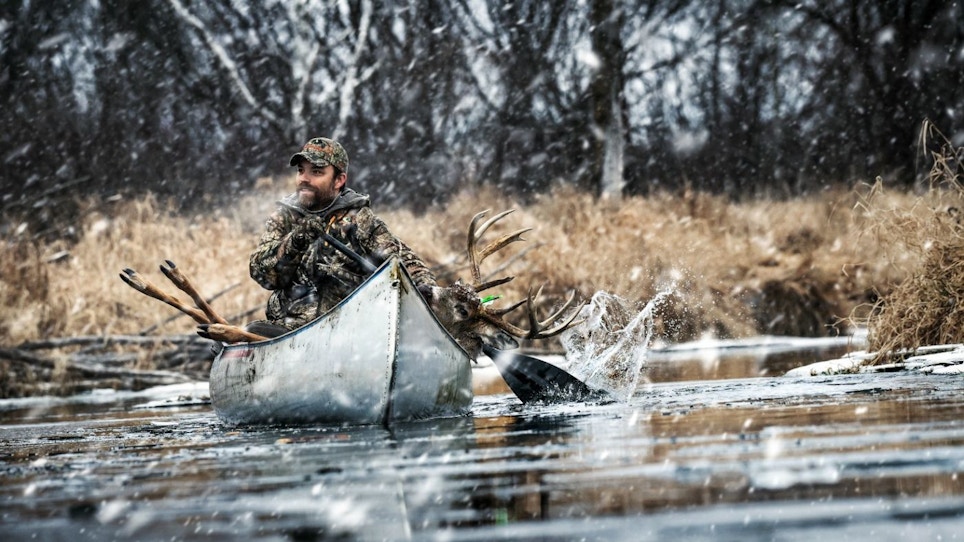
With the camo market saturated with competitors, Mossy Oak stays tuned to the core idea that effective camo must break up the human outline.
It’s been a busy string of months for Mossy Oak, the Mississippi-based camouflage company. In January 2019, the news came down through a respected industry report that the company’s Break-Up Country pattern was the top-selling camo pattern for deer hunters in the United States for the third consecutive year. Also in January, Mossy Oak inked a multi-year partnership with Plano Synergy, a multi-brand company that’s one of the behemoths in both hunting and fishing industries. Late in 2018, Mossy Oak became the official camouflage pattern of the National Rifle Association. That announcement came on the heels of Mossy Oak signing a partnership deal with Carhartt clothing.
There’s little to suggest Mossy Oak will be slowing down in 2020. The licensing arm of Mossy Oak, which already oversees some 1,500 licensees, is closing new deals almost daily, and the company continues to push the technological limits of printing — something that’s been at the core of Mossy Oak since it was started by Toxey Haas in 1986.
Hunting Retailer had the chance to talk with Chris Paradise, Senior Vice President & Chief Sales Officer of Mossy Oak, about what’s on the packed agenda for Mossy Oak in the new year. Paradise, who’s been in the hunting industry for nearly a quarter of century, said it’s full-speed ahead at Mossy Oak.
HR: What can we expect out of Mossy Oak in 2020?
Paradise: We will have a number of new innovations in fishing and hunting and some new surprises you’ll see in more lifestyle-type products. We have a unique technology that allows us to separate ourselves from the pack, and that technology gives us the ability to consistently and repeatedly transfer our patterns on to products. We will have new patterns that we’ve designed internally, but we’ll be showcasing those patterns in unique ways.
HR: Are there new biological discoveries in the animal/wildlife world that could change the way camo looks or is used?
Paradise: There’s a better general understanding of the physiology of how animals’ eyes work, yes, but it hasn’t fundamentally changed the way we do things. Research continues to support the premise that camo has to break up the human outline. The key is causing enough confusion for an eye to not see what is there. We’ve always hung our hat on the number one reason people wear camo is to break up the outline. We’ve talked about that for years in all of our patterns, and it remains central to everything we still do.
HR: What do you expect across your segment of the hunting industry in 2020?
Paradise: We know the camo market is beyond the saturation point. The dedicated brands that invest in the market, that have a track record of innovation, will be able to operate in that market from a leadership position. For a while there, anybody with an Apple computer and a design program could invent a new camo pattern — but we’re seeing a number of those camo companies sort of fall off the map. These companies who just have a cool pattern will go away within months, but the companies that diversify and keep pushing for new technologies will stick around.
HR: Mossy Oak has partnerships with a wide array of conservation organizations. Was setting up those relationships a planned strategy?
Paradise: Yes, for sure. We’re very proud of the commitment we’ve made to conservation organizations in the shooting, hunting and fishing space. We made a concentrated effort to be the leading conservation camo company in this space. That was a way to attach ourselves to issues we feel strongly about. We’re the exclusive, official pattern of the NRA, Ducks Unlimited, the NWTF, QDMA, the Tarpon Trust, B.A.S.S. — the list goes on and on. We want to work with those groups that are the stewards of what’s important to us. That positions us strategically against other companies that haven’t nurtured the relationships we have.
HR: How has the decades-long slide in the number of Americans hunting affected business?
Paradise: Participation and access are critical points for determining what the future looks like. Yes, the bullseye target consumer, the hunter, is on a downward trend — you can’t argue that, but we’ve worked hard to develop more consumers than just that hunter. Mossy Oak is in fishing, we’re in native living, we’re in home decor, we have Gamekeeper Kennels, we have a property division that operates in the real estate world. And our fishing business is exploding. I think as an outdoor pursuit, fishing offers easier access and a lower barrier to begin, and we haven’t seen the drop-off there. The companies that are just making a hunting product, there’s no doubt they’re feeling the pinch. Our diversity in our customer base is what’s helped us.
HR: How has the consolidation of mammoth retailer brands like Bass Pro and Cabela’s and the changing landscape of specialty retail affected Mossy Oak’s business?
Paradise: Those changes can be hard for the consumer or the store owner, but we embrace those changes. If you don’t have a strong brand, you feel the pinch of that consolidation, but while the retailer may change, the customer is still there with the intent to purchase. We’ve watched consolidation take place for more than 30 years now, and we’ve been able to adapt by making sure our brand is strong in as many retail channels as we could be in across the spectrum.
HR: How has the rise in boutique brands, particularly in hunting apparel, changed your business?
Paradise: We love the smaller brands that start as endemic hunting brands and often break out into multiple market segments. Even the ones we don’t work with, we love to see the innovation. We also love the brands that are in another market segment and then come into the outdoor space. Because of the way we operate with partnerships, we touch consumers if they’re spending $5 or $5,000. We have more than 1,500 licensees, and that’s growing every day. There are so many unique items in the marketplace with Mossy Oak patterns. We have large partnerships with companies like Carhartt, Sketchers, Browning, Columbia and Crocs. We also have our patterns on smaller brands, on everything from lingerie to caskets. It’s a good feeling to work with brands that are carving out their niche and bringing Mossy Oak along for the ride.
HR: Lingerie, caskets and boat wraps. What would you like to see in Mossy Oak that hasn’t been yet?
Paradise: We’re working on a few of those now. Let’s just say there’s more to come, and people will get to see them at SHOT show. One is an endemic product, but one is a lifestyle product. That all goes back to the ability to print our patterns efficiently and to get it to market, something’s that’s been a staple of Mossy Oak. The easy part is coming up with a pattern — the difficult part is getting that pattern to work on clothing, on a gun, on plastics or whatever you want to be camouflaged.

